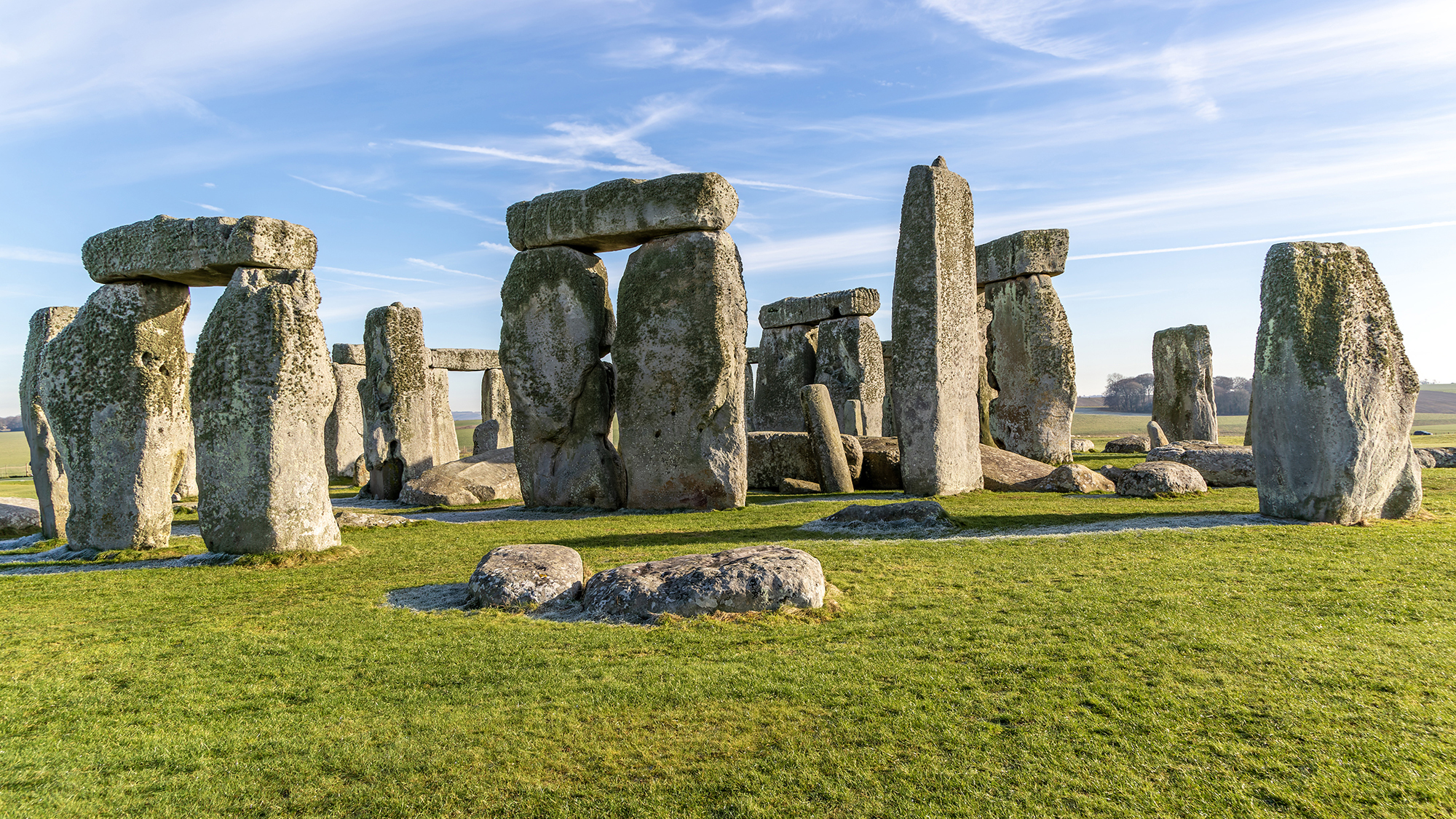One of the many archaeological mysteries at Britain’s Stonehenge has been solved. The site’s six-ton Altar Stone hails from over 400 miles north in Scotland, not from Wales or other closer areas of southern England as scientists previously thought. This trek points to the possibility that more advanced transportation methods and societal organization existed here about 5,000 years ago. The findings are described in a study published August 14 in the journal Nature.
[Related: What is ‘Seahenge’? Bronze Age worshipers may have used the structure to try to extend the summer.]
What is the Altar Stone?
Around 180 generations have passed since this ancient stone circle in southwest England was first constructed. The Altar Stone is about 16 feet long and 19 inches thick and sits at the center of the circle. While it is not currently standing upright like the other stones, scientists are still uncertain if it stood vertically at some point. It arrived in the area sometime around 2,500 BCE, but its exact arrival date remains a mystery.
Previous analysis of the roughly 5,000-year old Neolithic site identified two main types of stone–sarsens and bluestones. The sarsens were sourced about 15 miles away in the West Woods near Marlborough, England, while some of the bluestones have Welsh origins. The Altar Stone is the largest of the bluestone megaliths, and while previous research has ruled out Anglo-Welsh origin, scientists were uncertain about where this stone came from.
Finding chemical fingerprints
To learn more, a team from the United Kingdom sent fragments across the globe to Curtin University in Australia. Researchers from the Timescales of Mineral Systems Group within Curtin’s School of Earth and Planetary Sciences looked for chemical fingerprints within the grains to determine their age and chemical makeup. In turn, this can tell scientists where the stone originated. The fragments matched rocks from northeast Scotland and were very different from Welsh bedrock.
“Our analysis found specific mineral grains in the Altar Stone are mostly between 1000 to 2000 million years old, while other minerals are around 450 million years old,” co-author and Curtin University PhD student Anthony Clarke said in a statement. “This provides a distinct chemical fingerprint suggesting the stone came from rocks in the Orcadian Basin, Scotland, at least 750 kilometers [466 miles] away from Stonehenge.”
The discovery also holds a personal significance for Clarke, who grew up in Mynydd Preseli, Wales–where some of Stonehenge’s stones came from.
“I first visited Stonehenge when I was one year old and now at 25, I returned from Australia to help make this scientific discovery,” Clarke said. “You could say I’ve come full circle at the stone circle.”

Specifically, with the age of the zircon minerals in the stone, the team is over 95 percent certain that it came all the way from northeastern Scotland. To get this data, they used highly-specialized mass spectrometers that can tell scientists the ages of everything from rock-forming materials and ceramics to meteors or bones. Even with this high-tech method, the findings still raise some major questions. The team is still not sure just how Neolithic humans transported stones so far in 2,600 BCE.
“Our discovery of the Altar Stone’s origins highlights a significant level of societal coordination during the Neolithic period and helps paint a fascinating picture of prehistoric Britain,” Curtin University geologist Chris Kirkland said in a statement. “Transporting such massive cargo overland from Scotland to southern England would have been extremely challenging, indicating a likely marine shipping route along the coast of Britain. This implies long-distance trade networks and a higher level of societal organization than is widely understood to have existed during the Neolithic period in Britain.”
Over ice, land, or sea
With this new data, the team hopes to figure out how Neolithic Britons transported such a large piece of rock 466 miles and exactly where it came from in Scotland’s rugged northeast.
[Related: Bronze Age village was ‘pretty cozy’—until Britain’s Pompeii.]
According to Kirkland, there are three main ways that the stone could have traveled too far–over ice, via a land route, and or on the water. The team believes that the marine route is most likely. Data on ice flows at the time reveal that they were going in the wrong direction and traveling over land would have meant crossing large mountains and through dense forests.
“We have succeeded in working out, if you like, the age and chemical fingerprints of perhaps one of the most famous stones in the world-renowned ancient monument,” Aberystwyth University geologist and geochemist Richard Bevins said in a statement. “While we can now say that this iconic rock is Scottish and not Welsh, the hunt will still very much be on to pin down where exactly in the northeast of Scotland the Altar Stone came from.”











/https://tf-cmsv2-smithsonianmag-media.s3.amazonaws.com/filer_public/34/31/3431771d-41e2-4f97-aed2-c5f1df5295da/gettyimages-1441066266_web.jpg)







Discussion about this post